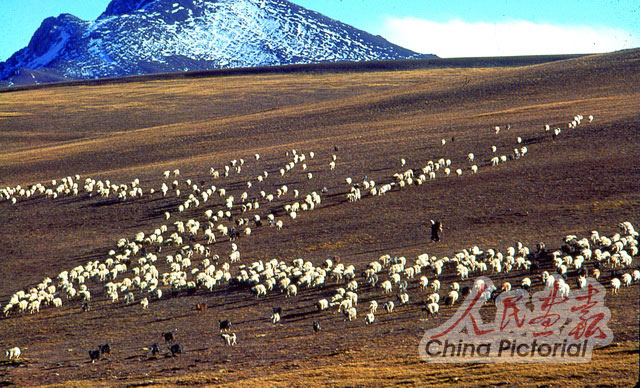Text by George B. Schaller
Wildlife Conservation Society
|

|
| Settling the territorial conflict between wildlife and livestock remains a key mission for local government and scientists. by George Schaller |
The remote upland of the Chang Tang in the Tibet Autonomous Region harbors one of the most important and unique wildlife assemblages in the world. Changes during the past quarter century have had an impact not only on the wild yak, Tibetan antelope (also called 'chiru'), and other wild animals but also on the pastoralists whose livelihood and culture depend on these vast steppes of grass. What must be done to maintain this beautiful region, this natural treasure of China, in ecological balance? The Chang Tang is in a rapid and major period of transition, and answers to this question are urgent.
I first visited Pujung Narla in 1991 while conducting a wildlife survey with a team from the Tibet Forestry Bureau and Tibet Plateau Institute of Biology. Pujung's home was a yak-hair tent at an elevation of 4900 m near the northern limit of grazing where his herd of sheep, goats, and yak could still thrive. Beyond, to the north, stretched 500 km of uninhabited terrain, mostly barren desert steppe "where nothing passes but the wind," as one traveler wrote. Pujung invited us into his tent with the typical hospitality of a Tibetan nomad, and his daughter churned us fresh butter tea. He told us that he had moved here a decade earlier from the south. In the late 1960s, the government abolished all private property and established cooperatives. Then, in 1981, in another drastic reversal, the cooperatives gave way to the household responsibility system, and livestock and other goods became private again. Pujung prospered under this new system.